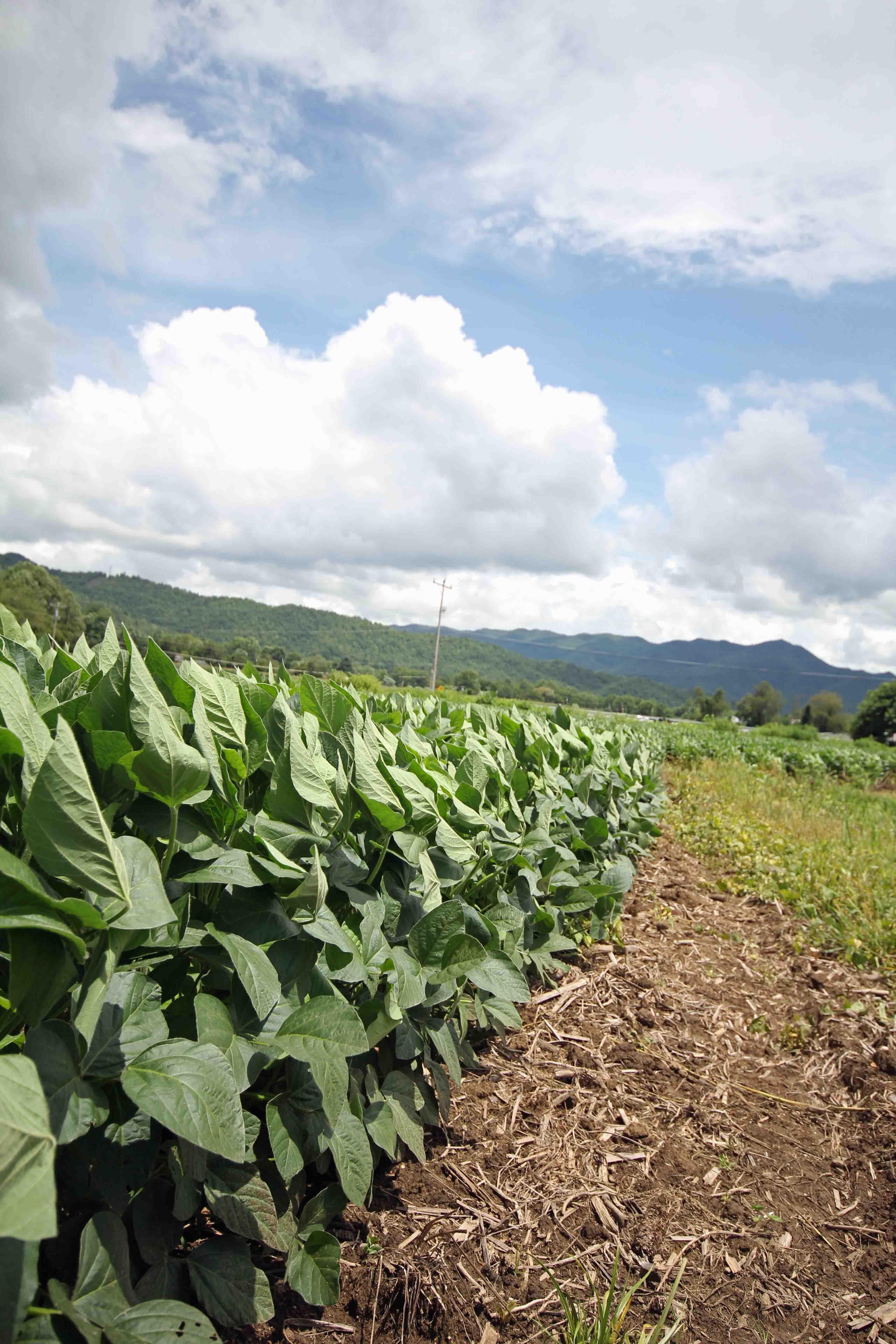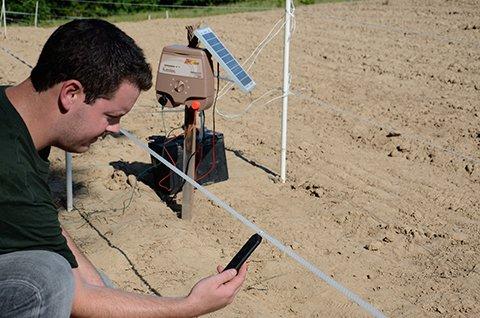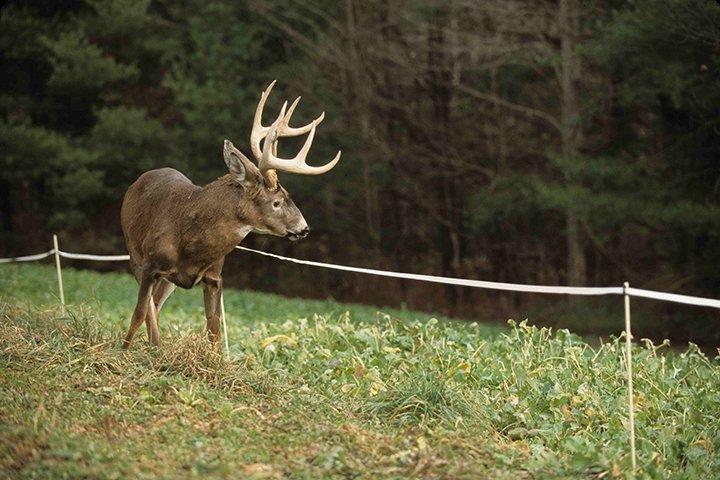Are Your Food Plots Getting Hammered Before They Can Mature?
When it comes to deer hunting, food trumps all. It dictates a deer's life. Even during the rut, when bucks are running wild, their path is not aimless. They are seeking out does that are going to be concentrated around feeding areas. From early season to the last day, and even during the summer while those antlers are growing, nothing will improve your hunting more than a reliable, nutritious food source on the area you hunt. For many, that means food plots.
But planting food plots isn't easy, and it definitely isn't cheap. Unfortunately, many hunters lose the hours and dollars spent preparing food plots by failing to protect them from overbrowsing during the early stages of plant growth. Allowing your plot to reach maturation is critical. Vibrant, healthy plants can tolerate grazing and will draw deer well into the late season. A plot that's overbrowsed to nubs will become little more than a disappointing piece of dirt.
The most important time to protect your plot is during germination, especially with spring plantings like beans and peas. When those little green sprouts start popping up through the topsoil, deer are in Heaven. It's my equivalent of someone covering the ground with Bit-O-Honey candy. I'd eat every last one. But deer can decimate a plot during the germination period, meaning your time, effort and expense will be wasted. If you want your food plot to thrive, then you have to make sure it survives the initial browse pressure. Here are some ways to do that.
Install a Dual-Perimeter Electric Fence

Installing a dual-perimeter electric fence system is easier than you might expect. In looking at pictures of the electric fence system, you'd probably think to yourself that deer will jump right over it. Based solely on height, they easily could. The reason they don't has to do with depth perception. The deer realize there are two fences to go over, but they stand too close together to land between them. The deer know they are going to have to jump both fences at the same time, and they don't like that idea. The deer inch as close as possible to the outer tape to coordinate their leap. As they lean in on the tape, it shocks them. The startled but unscathed deer retreats with fear of the fence, keeping it from attempting to jump it again. When you add up the cost of planting food plots per acre, you can see pretty quickly that it doesn't take long for the cost of damage to exceed the cost of protection. And you can use one of these fences year after year.
Installing a dual-perimeter electric fence system is simple. With two guys, we enclosed a half acre in less than an hour. It is easier to install one of these systems with two or more people, but a solo project is completely doable. When you consider the cost of everything that goes into producing a quality food plot, then spending a little extra to protect your investment is a wise idea.
Alternative Food Plot Protectants

Messina Wildlife's PLOTSAVER is another interesting solution for food plot protection. Plotsaver is a one ribbon fence that omits a repellant odor. The reusable barrier ribbon is hung 30 inches above the ground and is treated with Plotsaver deer repellent. The fence and repellent offer a one-two punch of both sight and smell, and together they keep deer from jumping it. A Plotsaver starter kit comes with 840 feet of ribbon, which is enough to protect an acre, and a pint of deer repellent concentrate. Plotsaver claims it will protect your food plot for approximately 100 days, and it costs only $50.
Milorganite is an organic fertilizer produced from human sewage at a Milwaukee, Wisconsin, waste treatment plant. It repels deer because of its smell. However disgusting it may sound, it does not have a strong odor to humans. But it must be offensive to the sensitive nose of a whitetail. In a study conducted at the University of Georgia, results showed that use of Milorganite around food plots reduced browsing of soybean plants for at least 37 days.
Want to Plant That Micro Kill Plot You've Been Planning?
Which Dual-Perimeter Fence Is Best?

Gear Review: OtterBox Trooper LT 30 Soft-Sided Cooler in Realtree EDGE
Installing dual-perimeter electric fence systems is pretty simple. Let's say you want to protect a square that's 50 yards by 50 yards. Start in a corner and hammer in a post. Repeat this in each corner. Use a tape measure, or just step off, 10 yards from the first post and install a second post. Repeat this every 10 yards. You'll end up with four corner posts and 16 interior posts. Now repeat the entire process by building a second square three feet inside the outer square.
Running the fencing is simple. Just start at one corner by tying the wire to the attachment clip. Unspool the wire along the perimeter of the posts. Once you are all the way around, slip on a wire tensioner. Now go back around connecting the wire to each post with an attachment clip at 10 inches above the ground. Repeat for the top wire at 24 inches off the ground and the outside perimeter wire at 18 inches off the ground.
Editor's Note: This was originally published on May 16, 2013.
Don't Miss: 5 Food Plots for Procrastinators
Are you a deer hunter wanting to learn how to accomplish your goals? Check out our stories, videos and hard-hitting how-to's on deer hunting.








